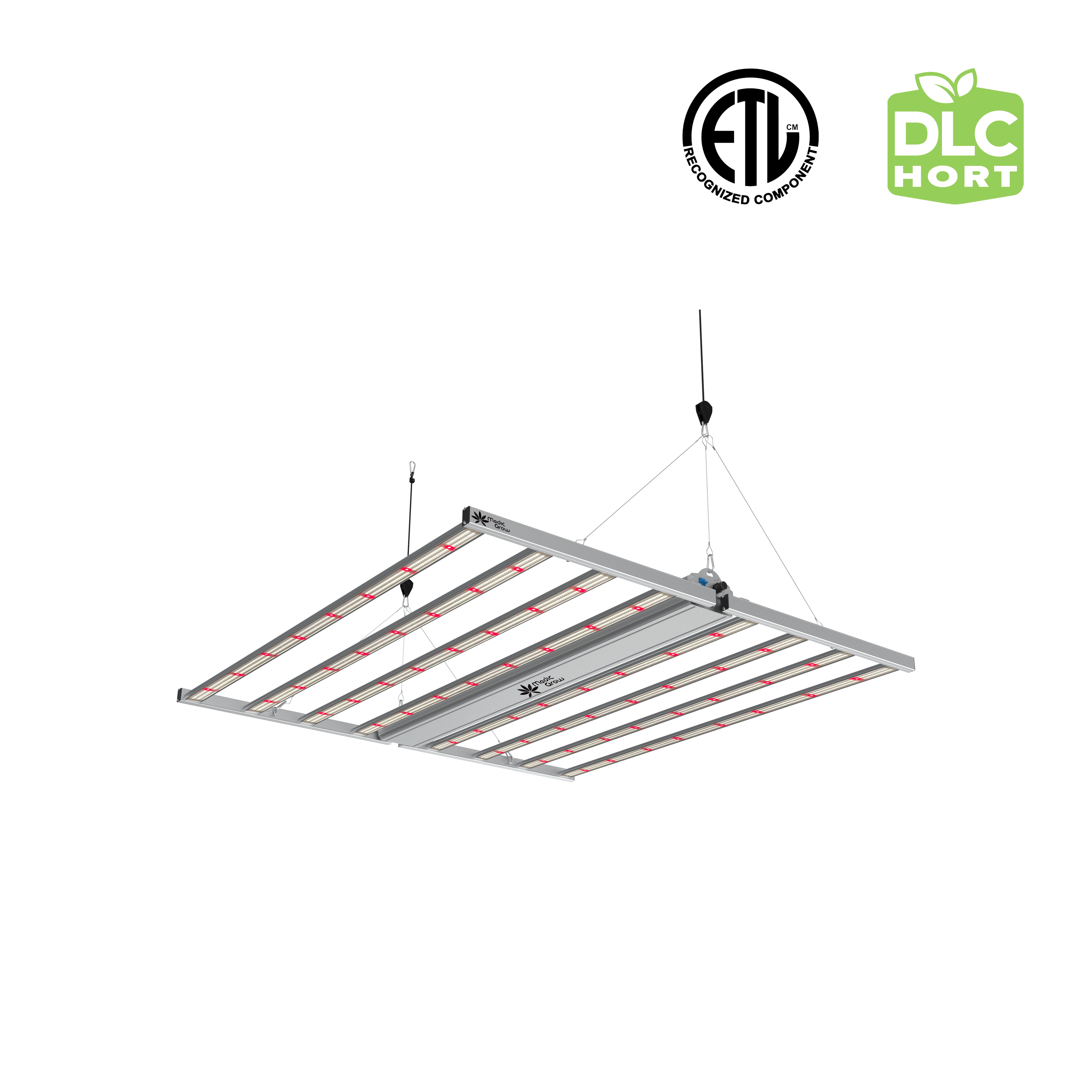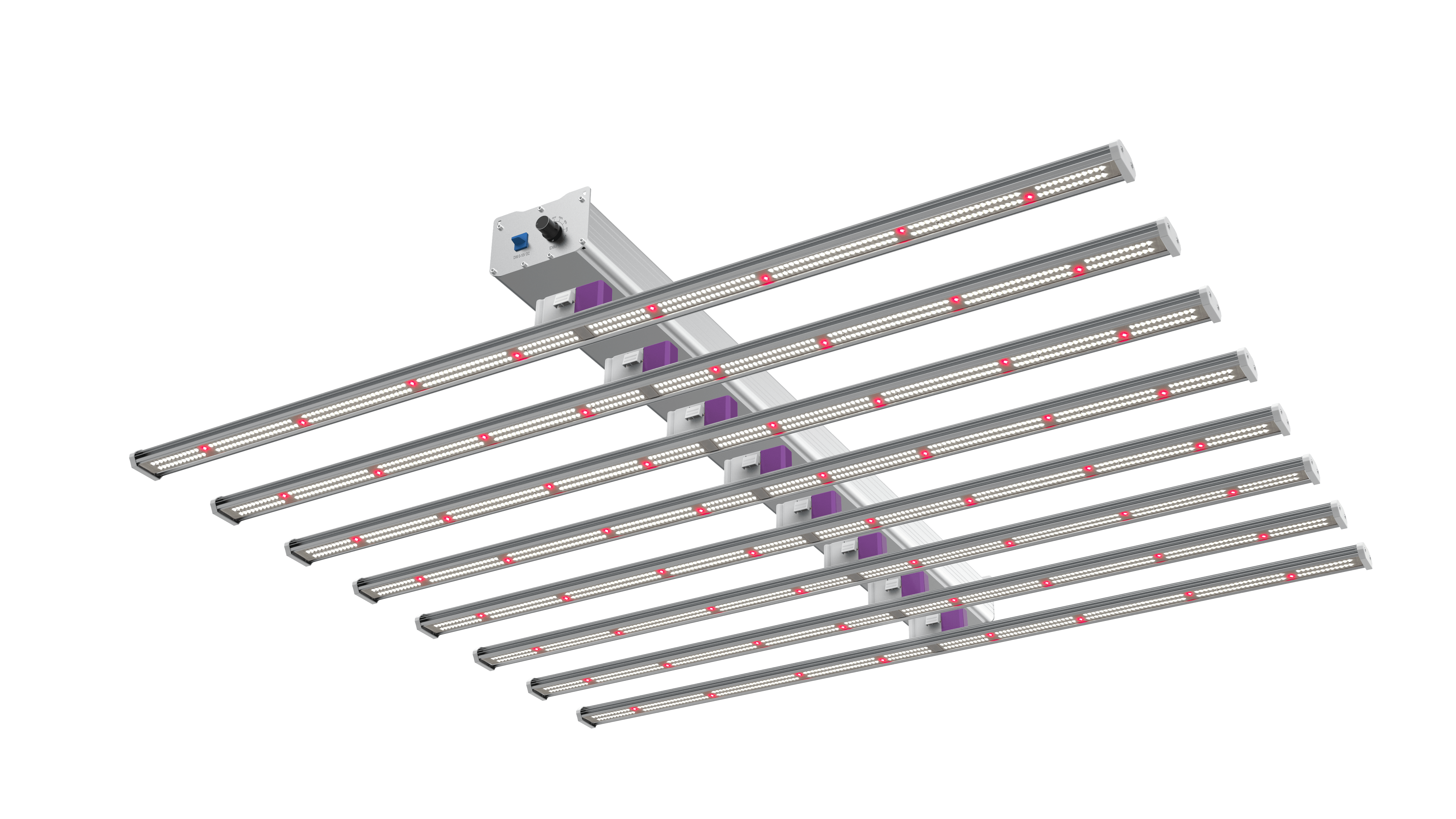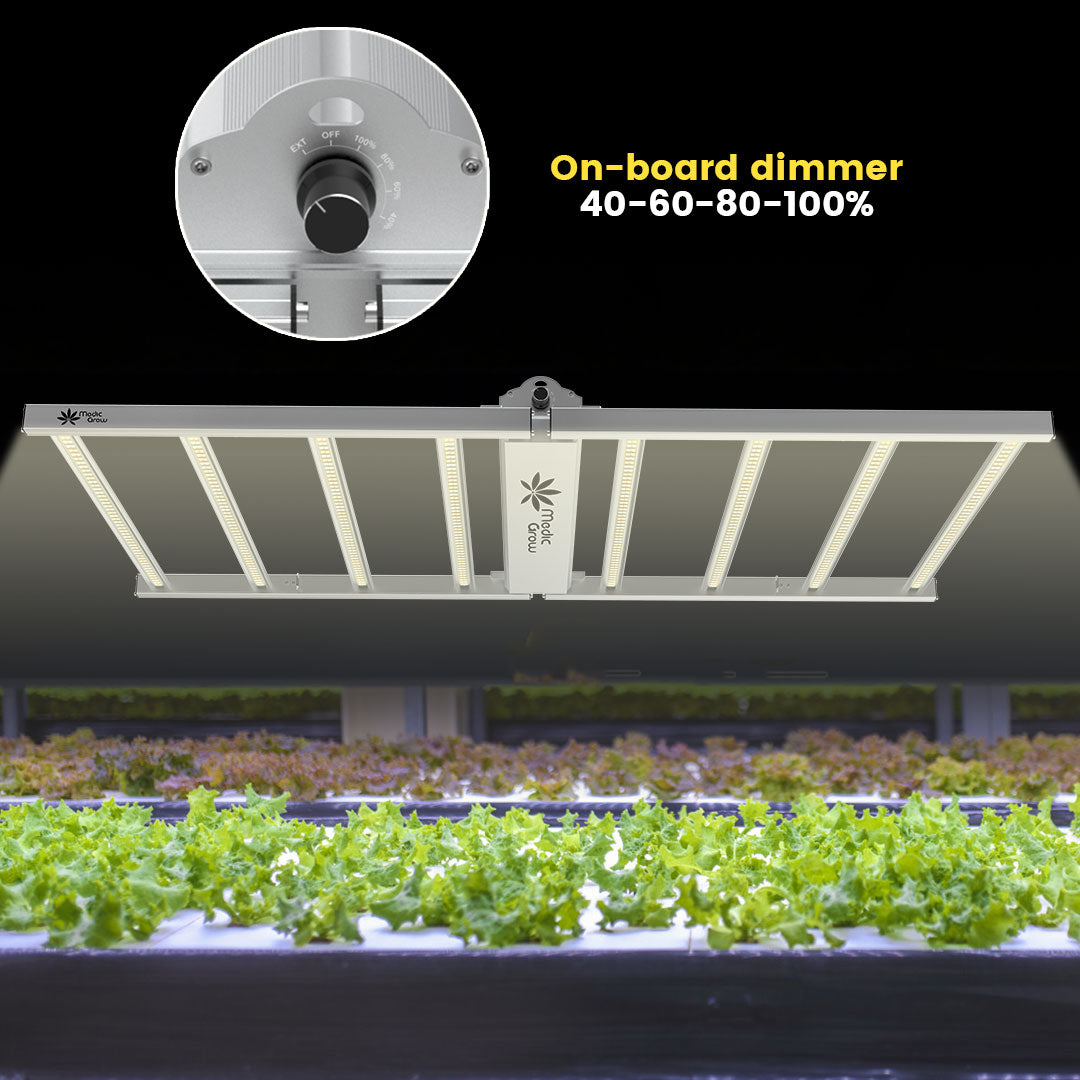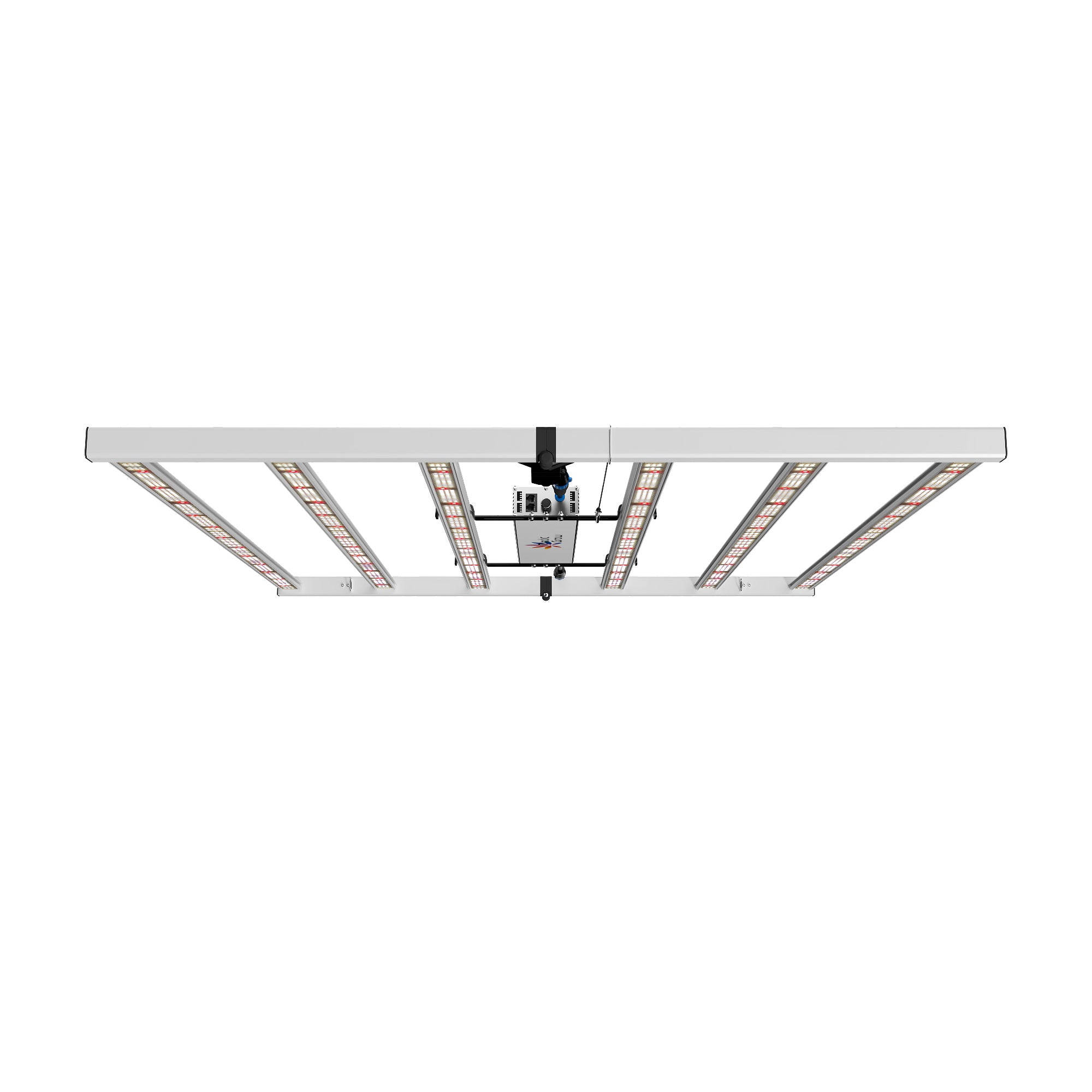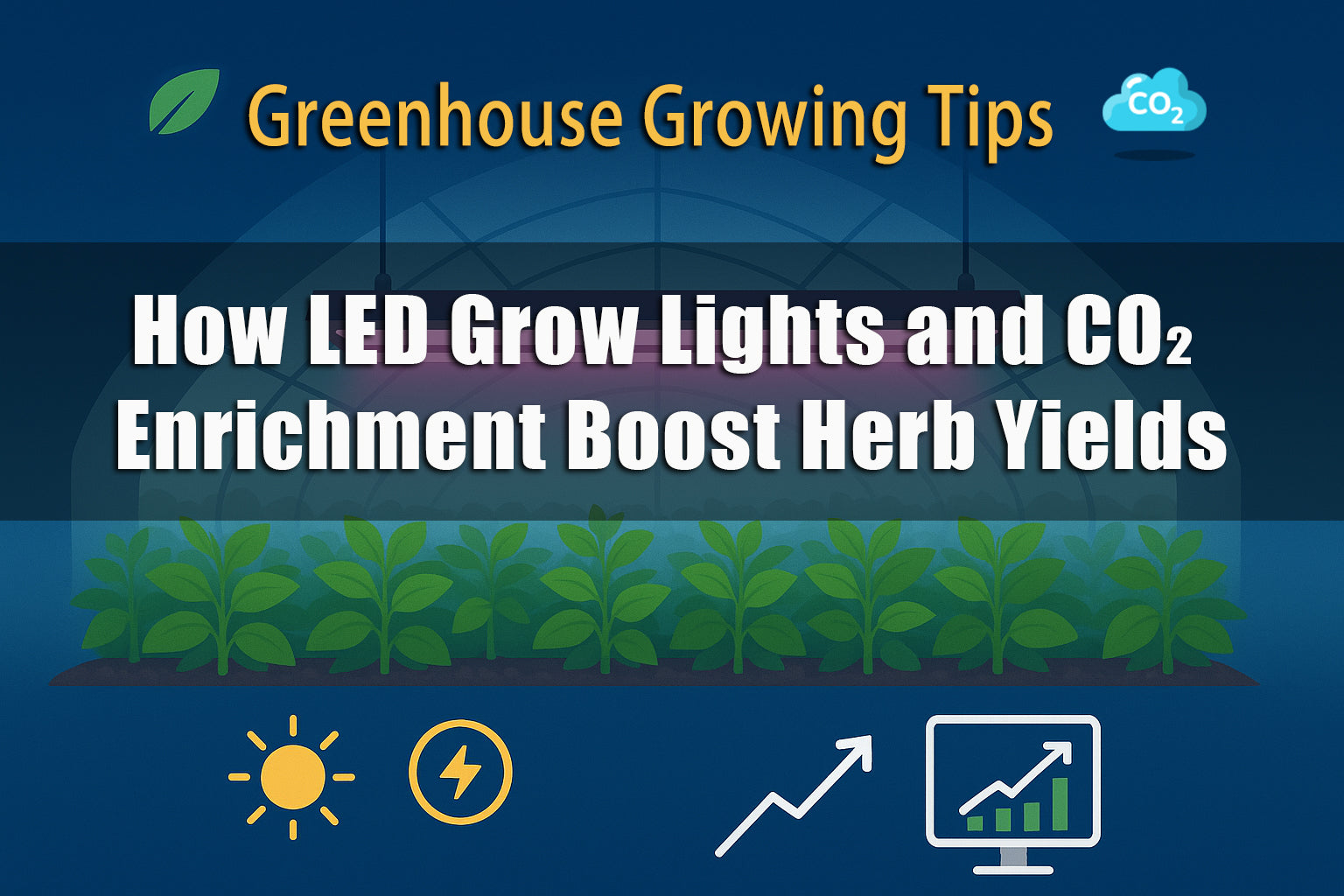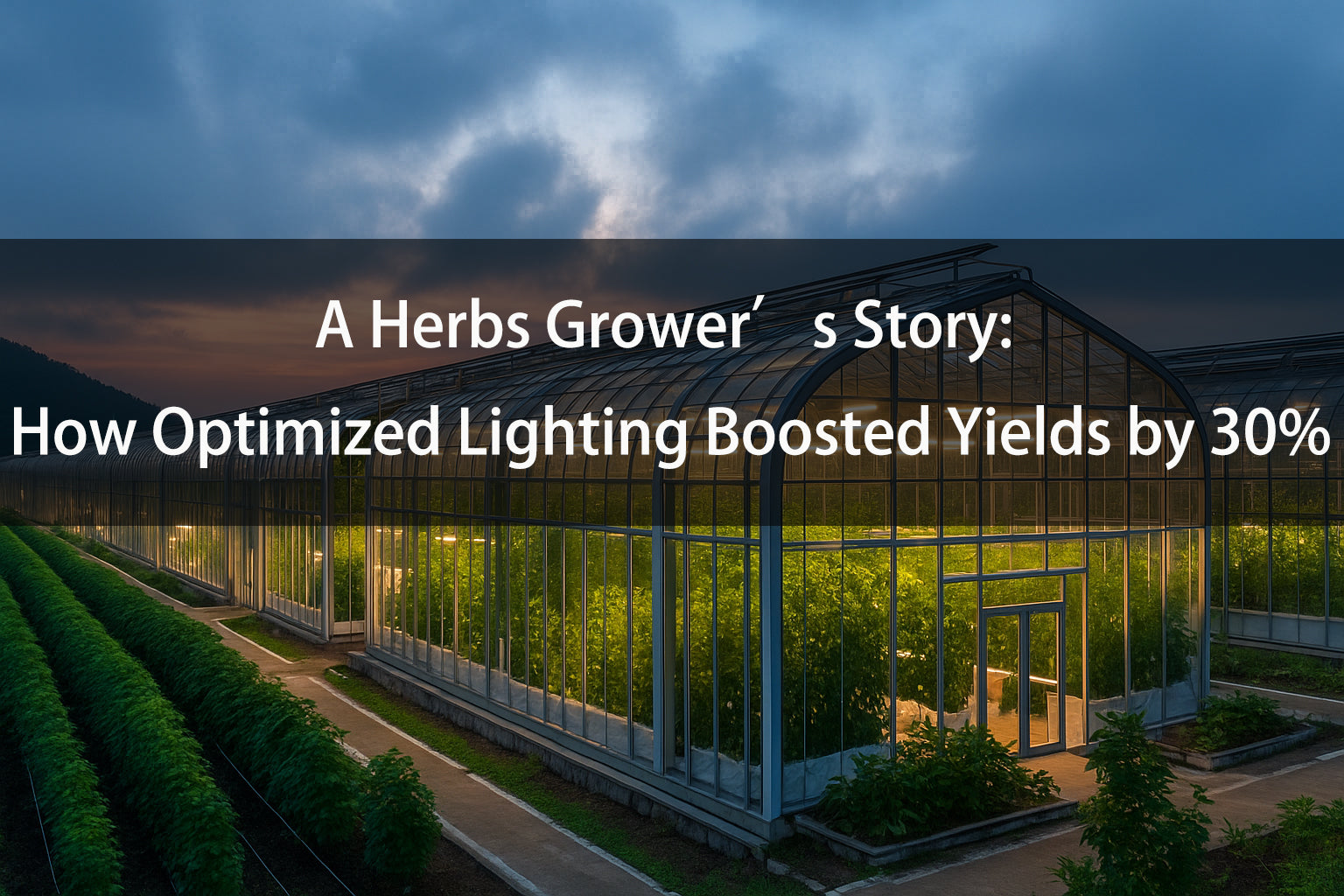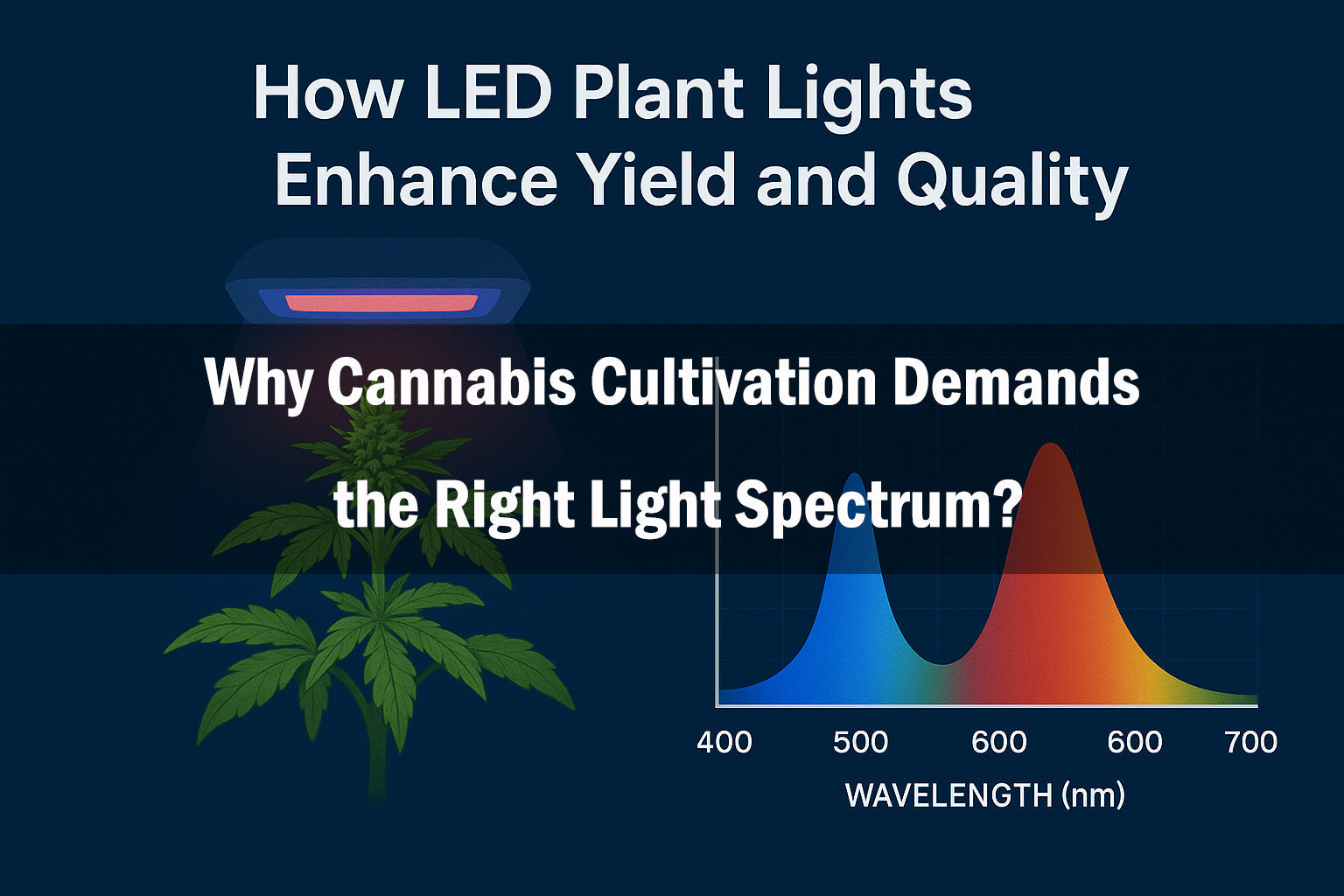
How To Grow With Coco Coir: The Complete Guide
In the past few years, Coco Coir or Coconut Coir has been increasingly gaining popularity as a renewable and natural growing medium.
This coconut by-product was previously discarded after the coconut harvesting process but is now being used by farmers in commercial and home-growing operations.
In this article, let's find out what exactly coco coir is and how growers can grow with coco coir and full-spectrum grow light.
We’ll explore:
- Part 1: What is Coco Coir?
- Part 2: Types of Processed Coco Coir: Which One Is Ideal For Your Garden?
- Part 3: Which Plants Can You Grow With Coco Coir?
- Part 4: How Can Growers Grow Plants In Coconut Coir?
- Part 5: Advantages Of Using Coconut Coir
- Part 6: Disadvantages Of Using Coconut Coir
- Part 7: Things To Keep In Mind When You Grow With Coco Coir
What is Coco Coir?
Coco Coir has been gaining popularity for being a suitable growing medium for hydroponic farming because of its ability to hold water. It is basically the natural fibrous part that is obtained from the outer husk of coconuts.
This by-product of coconuts has traditionally been used for a long time to make baskets, brushes, mats, and mattresses and has recently found its way into hydroponic farming.
Being a renewable resource, it is considered an environmentally friendly alternative to peat moss. Plus it is quite stiff and sturdy in structure and can be reused multiple times, thus allowing growers to save money.

Image Source: advancednutrients.com
Coco coir has a very low nutrient content which allows you to have manual control over the nutrients that you supply to your plants.
This also means that when you grow with coco coir, you will need to frequently test the medium to ensure that your plants don’t lack essential nutrients.
Since coconut coir is essentially a waste product obtained during the coconut harvesting process, using coconut coir soil helps reduce the waste generated.
Instead of being discarded, it can be used in various applications in gardening.
Coco coir has a pH of 5.8-6.7 which is pretty close to neutral, but slightly alkaline. This amount of acidity present in the coir is considered ideal to allow nutrients to be released slowly.
What is Coco Coir Made Up Of?
Coco Coir goes through extensive processing after the harvesting process to make sure that it is ready to be used for gardening purposes.
Coir manufacturers often soften the husk using a freshwater or saltwater bath. A saltwater coir might contain high amounts of sodium which is why it's better to choose a freshwater coir instead.
After the husk is soft enough, the coir is extracted from it and allowed to dry for a significant amount of time. This process can take about a year — coir that is left to mature for longer is much better in terms of quality.

Image Source: emmanuelglobalexports.org
Next, the coco coir is organized into compact bundles or bales after which they are processed further into formats such as chips/croutons peat, etc.
After this, some manufacturers choose to sterilize the product before packing it while others avoid sterilizing as this may end up killing any beneficial fungi or bacteria.
In the next part, let's take a look at the different kinds of processed cococoir for plants that can be found in the market.
Types of Processed Coco Coir: Which One Is Ideal For Your Garden?
Processed coco coir is sold loose in the form of coco peat or given the shape of blocks and sold as croutons, chips, or fiber. It is crucial to find the best coco coir for growing to help your plants thrive.
Depending on the needs and requirements of the plants, growers can either use one or a combination of these soil amendments. Several growers like to use coco chips in combination with coco peat.
1. Coco Peat:
Coco peat is a natural fiber obtained from finely granulated coco husk. The texture of the peat is similar to that of soil. When added to soil, it increases the porosity of the potting mix, allowing it to hold more water.

Image Source: gsi. company
Coco peat can be used as an alternative to sphagnum peat moss. Unlike peat moss, it can be easily reused two to three times, allowing gardeners to save money.
Coco peat is tightly packed and compact which means that it doesn't have many air pockets.
2. Coco Fibre:
Coco fiber is the natural fiber obtained from the husk of the coconut. It is rough and coarse in texture and resembles straw.

Image Source: Amazon
Since it is loose and light, it can be used to add more air pockets to your potting mix. It is typically used to have proper aeration in your growing medium.
It must be noted that coco fiber degrades rather quickly, meaning that there would be lesser air pockets over time. It lacks density and structure which means that it wouldn't have the same water-retaining qualities as coco peat.
3. Coco Chips:
Also known as Coco croutons, coir chips are coconut husk chips or organic pellets. These coir chips can be used as a growing medium to grow orchids.
These are excellent for increasing soil aeration and drainage because there's plenty of space between them.

Image Source: ehg-360.com
It is beneficial to grow with coco coir chips — this is a medium that is well-aerated and allows the plants to have extensive root systems, therefore, increasing the plant's ability to take up nutrients and water.
In addition to that, coir chips make great alternatives to rocks or clay pellets. Those who want the benefits of both coco peat and coco fiber can use coco chips as a coco coir alternative.
Which Plants Can You Grow With Coco Coir?
Plants such as ferns, orchids, anthuriums, pothos, monstera, etc. can be grown using coco coir. Coco coir for plants can be used to grow seedlings and cuttings.
Growers can also use coconut coir poles to grow plants that have vines.
How Can Growers Grow Plants In Coconut Coir?
Growers who are familiar with potting soils know that most soils come with low nutrients — they need to nourish and supply the soil with nutrient solutions during the initial weeks of growth to ensure that plants get the nutrients required by them.
However, when you grow with coco coir (which is an inert growing medium), you are required to start feeding the plants with nutrients straight away.
Coco coir soil can be used as an element of a soilless potting mix. It can be mixed with other elements such as perlite, sand, pine bark, compost, etc. There are manufacturers that sell premixed products if you want to avoid the hassle of making your potting mix.
Coco coir rooting mats and baskets are used to grow seedlings and cuttings as it keeps them hydrated.
Next, let's take a look at the advantages of using coco coir.
Advantages Of Using Coconut Coir
There are numerous advantages of using coco-coir soil. Here's why you should grow with coco coir:
●Excellent Water Retention:
One of the reasons why gardeners grow with coco coir is because of its phenomenal water-retaining properties.
Coco coir soil can hold water several times its own weight, allowing the roots of your plants to stay hydrated. Farmers mix coco-coir soil in natural soil or sand to increase the water-retaining capacity.
●Aeration and Drainage:
Since there are air pockets in the medium, coco coir is well-aerated and provides amazing drainage to plants. It can be used to loosen up clay soil.
Coco coir is usually compressed and needs to be soaked before use. Its compact size makes it easy to ship and store.
●pH Levels:
The pH levels of coco coir are (approximately) 5.8 - 6.7, meaning that coir is neutral in nature as opposed to peat moss which is acidic. This is why coir is ideal for garden bedding and greenhouses.
●Recyclable:
Coir is structurally sturdy and degrades much slower than other organic materials, meaning that you can reuse it twice or thrice. Plus, coir makes a nice addition to your compost.
You can grow with coco coir multiple batches of plants using the same coir soil if you manage to take good care of the coco coir hydroponics system.
●Sustainable:
Coco coir soil is a renewable resource that is readily available and budget-friendly. Since it is a by-product of the coconut harvesting process, it reduces the amount of waste that ends up in a landfill.
●Antifungal Properties:
The antifungal properties of coir make sure that pests and harmful pathogens stay at bay and that it prevents fungal growth. Coir encourages the growth of beneficial microorganisms around the root area because of its high lignin content.
●Suitable for hydroponic farming:
Coco coir can be used as a growing media in hydroponic farming. Beginners who are new to hydroponic farming and don't have the budget to invest in a full-fledged hydroponic system can use coco-coir soil to grow plants.
They would need to water the plants with a nutrient-rich solution to ensure that they are getting all the nutrients that they need. The aeration and drainage allow the plants to grow healthy roots.
Note: LED grow lights can be installed to create a hydroponic system indoors.
●Naturally Resistant To Pests:
Since there isn't much organic decaying matter for pests and insects to feed on, cococoir is naturally resistant to them.
Before you decide to grow with coconut coir, it's important to take a look at the disadvantages of using coconut coir as well.
Disadvantages Of Using Coconut Coir
Coco coir comes with its own set of drawbacks as well:
●Can't keep the plants upright:
Even though coir boasts high water retention, aeration, and drainage, it doesn't provide plants with structure as natural soil does. Unlike natural soil, coco coir soil isn't as stable and plants would need support to keep them upright.
●Nutrient Supplementation:
Coco coir is an inert growing medium. This means that it doesn't hold any nutritional value. This means that growers would need to constantly test the soil for nutrients, test the pH levels and use solutions to make up for any deficiencies.
●High Sodium Content:
Some brands soak the coir fibers in saltwater which can be harmful to the plants. It's best to read the labels to make sure that the coir that you choose is rinsed with fresh water to wash away any salts.
●Treated with Chemicals:
Low-quality coir is treated with chemicals to protect it from bacterial growth. When you grow with coco coir, quality is something that you cannot compromise on. Several manufacturers treat the coir with chemicals which affects the overall quality of the product.
Things To Keep In Mind When You Grow With Coco Coir
●Several manufacturers soak the coco coir in salt water which can make the coir absorb high amounts of sodium. This can negatively impact the health of the plant. Choose a product that has been soaked in freshwater or has been rinsed with fresh water in the later stages.
●Make sure to read the labels and know more about the storage process of manufacturing companies before making a purchase.
●It's imperative to store coco coir correctly to ensure that it doesn't get contaminated or absorb moisture. If stored incorrectly in damp environments like growing tent kits, the coir can rot or get mildew or mold.
●If coco coir soil is stored for long periods, there is a risk of insect infestation which will damage the natural fibers of the coir. It is vital to store it carefully by taking utmost care and precautions.
Conclusion
Modern-day farmers have started to grow with coco coir and for all the right reasons: it is an organic renewable resource, is environmentally friendly, provides plenty of aeration, and drainage, has almost neutral pH levels and boasts high water-retaining capacity.
Growers can add coco coir soil to their potting mix to increase its water-holding capacity OR use a combination of coco peat and coco chips to provide the right growing environment for the plants. One can also combine it with other soil amendments such as rice hulls.
Coco coir can be used in commercial as well as home growing operations for seedlings, cuttings, and hydroponic farming.
Related Posts
Beginners Guide to Flushing Plants: Why, When, and How
Featured Products
Blog Posts
Contact Us with Any Idea!
- Choosing a selection results in a full page refresh.
!












